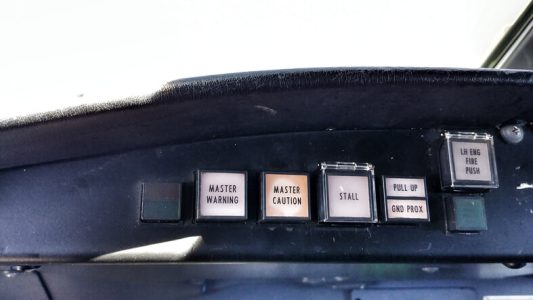Lessons from pilot training may have helped avoid accident
In a shocking turn of events, it appears that a recent Challenger upset had nothing to do with aviation weather, contrary to popular belief. While the final report is still months away, evidence suggests that the incident may have stemmed from a system failure, rather than unexpected turbulence. This revelation raises questions about the events that unfolded before the failure, particularly the first takeoff attempt that was marred by complications, and the pilot’s lack of adherence to accurately following procedures, lessons learned during pilot training.
During the initial takeoff, the flight officer noticed a discrepancy in airspeed readings between the right and left indicators, prompting the crew to abort the takeoff. The copilot then addressed the issue by removing the pitot cover from the right-side probe. Although not ideal, it’s important to remember that we’re all human.
However, when the engine was restarted, the warning panel displayed a RUDDER LIMIT FAULT. Despite this alarming message being a ground no-go item for the aircraft, the crew elected to proceed with the departure based on their familiarity with it. As the second takeoff commenced, the FO realized that he had forgotten to set the V-speeds, relying on memory for airspeed callouts. This oversight was followed by a cascade of caution messages, including AP STAB TRIM FAIL, MACH TRIM FAIL, and AP HOLDING NOSE DOWN, occurring around 6000 feet.
In an unexpected turn, both pilots referred to the PRI STAB TRIM FAIL checklist, even though it was not illuminated on the warning panel, instead of following the appropriate AP STAB TRIM FAIL checklist. Following this decision, they turned off the stabilizer trim switch, resulting in the disengagement of the AP and a series of drastic pitch changes, reaching up to 20 degrees and 4.2 Gs.
Though control was eventually regained, it was too late to prevent fatal injuries. This incident raises the question of why the crew chose the wrong checklist, particularly considering a recent airworthiness directive addressing the trim system specifically for this aircraft. Furthermore, the aborted takeoff and other unusual circumstances may have heightened crew stress levels and contributed to rushed abnormal procedures.
Adherence to Flight Policies and Procedures is Crucial for Pilots
In the aviation industry, there are well-established standard practices designed to minimize risks associated with flight operations. These policies and procedures provide a roadmap that guides pilots towards safe and successful flights. Here are a few compelling reasons why pilots should adhere strictly to these guidelines:
Safety: Above all else, the main purpose of flight procedures is to ensure safety. For instance, pre-flight checks help identify potential issues that might cause mechanical failure during the flight.
Efficiency: Standard procedures streamline operations and promote efficiency. Following a checklist, for example, ensures that no essential tasks are overlooked.
Regulatory Compliance: Aviation is a highly regulated industry. Ignoring established procedures can lead to violations of regulations, which can result in fines or even license suspension.
Professionalism: Adhering to flight policies exhibits a strong sense of professionalism. It shows respect for the industry, the aircraft, passengers, and crew members.
Accurate Decision Making: During emergencies, pilots who follow procedures are more likely to make accurate decisions under pressure. They have a clear framework to guide their actions, reducing the chance of error.
Consistency: Standard procedures ensure consistency, which is vital in a field where small deviations can have significant consequences. For instance, consistently following landing protocols can prevent hard landings and potential accidents.
Training and Proficiency: Regular adherence to procedures helps pilots maintain their skills and knowledge, ensuring they remain proficient in their roles.
Reduced Workload: By adhering to procedures, pilots can reduce their workload, especially in critical phases of flight like take-off and landing.
Risk Mitigation: Not adhering to procedures can lead to avoidable accidents. A pilot who chooses to skip de-icing procedures, for example, could end up with an aircraft that’s unable to maintain altitude due to ice accumulation.
Maintaining Industry Standards: Lastly, adhering to flight procedures helps maintain the high industry standards that the public expects from aviation professionals.
Following flight policies and procedures is not just a matter of ticking boxes—it’s about ensuring the safety and success of every flight. It’s about upholding the high standards that make aviation one of the safest modes of transport in the world. By adhering to these guidelines, pilots contribute significantly to this ongoing legacy of safety and professionalism.
This shocking incident reminds us that even on a standard day, safety precautions such as seatbelt usage are paramount. The consequences of rushing through procedures or making incorrect decisions can be dire. The unexpected nature of this incident serves as a stark reminder that aviation incidents can take unpredictable turns, turning routine situations into tragedies.
RELATED READING
RELATED CTS TRAINING










